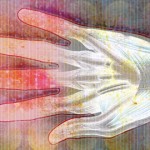There is no specific evidence basis for the treatment of calcinosis. Anti–tumor necrosis factor agents, bisphosphonates, and calcium channel blockers have been used. Surgical excision may be indicated in areas of recurrent infection, chronic pain, or impedance of function due to calcinosis.
The treatment of resistant skin disease is controversial—topical corticosteroids and pimecrolimus may help with symptomatic itching or redness, but it is possible that resistant skin disease reflects ongoing systemic disease and should be treated with increasing immunosuppression.
Given the findings of increased serum CD19+ B cells and lymphoid follicles in muscle biopsies of affected patients, rituximab has been proposed as a possible therapy. Initial case series noted clinical improvements in skin and muscle that paralleled B-cell depletion.19 A large, randomized, controlled, crossover trial of rituximab in refractory JDM and adult DM/polymyositis (the Rituximab in Myositis Study) was devised where patients refractory to corticosteroids and at least one other immunosuppressive agent were given rituximab or placebo on Weeks 0, 1, 8, and 9. The authors found that 83% of patients with refractory adult and juvenile myositis met the definition of improvement, but there was no significant difference in time to improvement.20 It was suggested that there may be better response to rituximab in the juvenile cohort within this study.
The Childhood Arthritis and Rheumatology Research Alliance (CARRA) has developed consensus-driven treatment protocols for patients with moderately severe JDM. These include combinations of oral corticosteroids, pulse intravenous corticosteroids, methotrexate, and intravenous immunoglobulin.21 Use of consensus protocols over time will hopefully lead to a more evidence-based rationale for treatment in the future.
Conclusion
While the causes of juvenile and adult DM are still elusive, recent developments point to the involvement of interferon and lymphoid follicles in the pathogenesis of DM. An initial aggressive approach using corticosteroids and disease-modifying antirheumatic drugs such as methotrexate may result in better long-term outcomes with less calcinosis and corticosteroid toxicity. In children, the prognosis is generally favorable, although future goals should include minimizing treatment toxicities and long-term morbidities of disease (calcinosis, lipodystrophy, cardiac, and pulmonary complications). Identifying biomarkers that can predict disease outcome and prognosis will be a challenge for dermatomyositis researchers in the future.
Disclosures
Dr. Reed has been a consultant for Genentech. Dr. Robinson has no disclosures.
Dr. Robinson is assistant professor of pediatric rheumatology at Rainbow Babies and Children’s Hospital in Cleveland. Dr. Reed is professor of pediatrics and medicine in the department of pediatric rheumatology at Mayo Clinic in Rochester, Minn.
References
- Rider LG, Miller FW. Deciphering the clinical presentations, pathogenesis, and treatment of the idiopathic inflammatory myopathies. JAMA. 2011;305:183-190.
- Mendez EP, Lipton R, Ramsey-Goldman R, et al. US incidence of juvenile dermatomyositis, 1995-1998: Results from the National Institute of Arthritis and Musculoskeletal and Skin Diseases Registry. Arthritis Rheum. 2003;49:300-305.
- Feldman BM, Rider LG, Reed AM, Pachman LM. Juvenile dermatomyositis and other idiopathic inflammatory myopathies of childhood. Lancet. 2008;371:2201-2212.
- Klein RQ, Teal V, Taylor L, Troxel AB, Werth VP. Number, characteristics, and classification of patients with dermatomyositis seen by dermatology and rheumatology departments at a large tertiary medical center. J Am Acad Dermatol. 2007;57:937-943.
- Eidelman N, Boyde A, Bushby AJ, et al. Microstructure and mineral composition of dystrophic calcification associated with the idiopathic inflammatory myopathies. Arthritis Res Ther. 2009;11:R159.
- Sanner H, Aalokken TM, Gran JT, Sjaastad I, Johansen B, Flato B. Pulmonary outcome in juvenile dermatomyositis: A case-control study. Ann Rheum Dis. 2011;70:86-91.
- Guzman J, Petty RE, Malleson PN. Monitoring disease activity in juvenile dermatomyositis: The role of von Willebrand factor and muscle enzymes. J Rheumatol. 1994;21:739-743.
- Robinson AB, Reed AM. Clinical features, pathogenesis and treatment of juvenile and adult dermatomyositis. Nature Rev Rheumatol. 2011;7:664-675.
- DeBenedetti F, DeAmici M, Aramini L, Ruperto N, Martini A. Correlation of serum neopterin concentrations with disease activity in juvenile dermatomyositis. Arch Dis Child. 1993;69:232-235.
- Wedderburn LR, McHugh NJ, Chinoy H, et al. HLA class II haplotype and autoantibody associations in children with juvenile dermatomyositis and juvenile dermatomyositis-scleroderma overlap. Rheumatology (Oxford). 2007;46:1786-1791.
- Wedderburn LR, Rider LG. Juvenile dermatomyositis: New developments in pathogenesis, assessment, and treatment. Best Pract Res Clin Rheumatol. 2009;23:665-678.
- Gunawardena H, Wedderburn LR, North J, et al. Clinical associations of autoantibodies to a p155/140 kDa doublet protein in juvenile dermatomyositis. Rheumatology. 2008;47:324-328.
- Gunawardena H, Wedderburn LR, Chinoy H, et al. Autoantibodies to a 140-kd protein in juvenile dermatomyositis are associated with calcinosis. Arthritis Rheum. 2009;60:1807-1814.
- Espada G, Maldonado Cocco JA, Fertig N, Oddis CV. Clinical and serologic characterization of an Argentine pediatric myositis cohort: Identification of a novel autoantibody (anti-MJ) to a 142-kDa protein. J Rheumatol. 2009;36:2547-2551.
- Bilgic H, Ytterberg SR, Amin S, et al. Interleukin-6 and type I interferon-regulated genes and chemokines mark disease activity in dermatomyositis. Arthritis Rheum. 2009;60:3436-3446.
- Reed AM, Stirling JD. The HLA-DQA1*0501 allele in multiple racial groups with juvenile dermatomyositis. Hum Immunol. 1995;44:131-135.
- Ramanan AV, Campbell-Webster N, Ota S, et al. The effectiveness of treating juvenile dermatomyositis with methotrexate and aggressively tapered corticosteroids. Arthritis Rheum. 2005;52:3570-3578.
- Stringer E, Bohnsack J, Bowyer SL, et al. Treatment approaches to juvenile dermatomyositis (JDM) across North America: The Childhood Arthritis and Rheumatology Research Alliance (CARRA) JDM Treatment Survey. J Rheum. 2010;37:1953-1961.
- Rios Fernandez R, Callejas Rubio JL, Sanchez Cano D, Saez Moreno JA, Ortego Ceteno N. Rituximab in the treatment of dermatomyositis and other inflammatory myopathies. A report of 4 cases and review of the literature. Clin Exp Rheumatol. 2009;27:1009-1016.
- Oddis CV, Reed AM, Aggarwal R, et al. Rituximab in the treatment of refractory adult and juvenile dermatomyositis (DM) and adult polymyositis (PM)—The RIM Study [abstract L13]. Arthritis Rheum. 2010;62:3844.
- Huber AM, Giannini EH, Bowyer SL, et al. Protocols for the initial treatment of moderately severe juvenile dermatomyositis: Results of a Children’s Arthritis and Rheumatology Research Alliance Consensus Conference. Arthritis Care Res. 2010;62:219-225.


